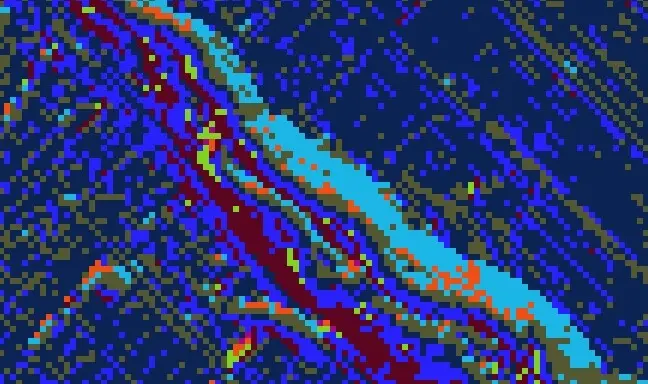

Previously, you created a watershed for the Stowe area, which you'll use as a study area for much of your subsequent analysis. Then, you'll snap the outlet point's location to match the stream exactly. First, you'll determine the stream's exact location by calculating the areas where water accumulates the most. For an accurate watershed, the outlet must be precisely located on the stream as rendered in the DEM (which may differ slightly from the actual location of the stream due to the DEM's resolution or other inaccuracies). One of the layers that you downloaded with the project is the Pour_point layer, which represents an outlet downstream of Stowe, Vermont. The other component is the location of an outlet point. With your flow direction layer, you have the first component for determining a watershed. Your new flow direction layer only has eight values, so it was automatically symbolized with a unique color for each value. Because the original flow direction layer had a wide range of values, it was automatically symbolized based on a color ramp, which uses the default black-to-white color scheme. Those values belonged to the sinks that you later removed from the data. Your previous flow direction layer, however, had some values that weren't one of those eight integers. These eight integers correspond to the eight possible flow directions (as any given cell is surrounded by eight cells). The cell values in a flow direction raster layer can normally be one of only eight integers: 1, 2, 4, 8, 16, 32, 64, and 128.

You'll learn how to create this layer in a later Spatially-variant, time- and discharge-invariant velocity field for Stowe_velocity_example-A raster layer that depicts a.Stowe_DEM-A raster layer that depicts elevation within.

Resolution is 30 meters, which means that each cell in the layer Stowe_surface_water-A raster layer that depicts all surface.This layer was derived from dataĪvailable from Vermont Center for Geographic Information Stowe_boundary-A polygon feature layer that depicts theīoundaries of Stowe, Vermont.Outlet downstream of the Little River where you'll create a unit Pour_point-A point feature layer that depicts the.The project contains a map with a topographic basemap and the following data layers: If you don't have ArcGIS Pro or an ArcGIS account, you can sign up for an ArcGIS free trial.


 0 kommentar(er)
0 kommentar(er)
